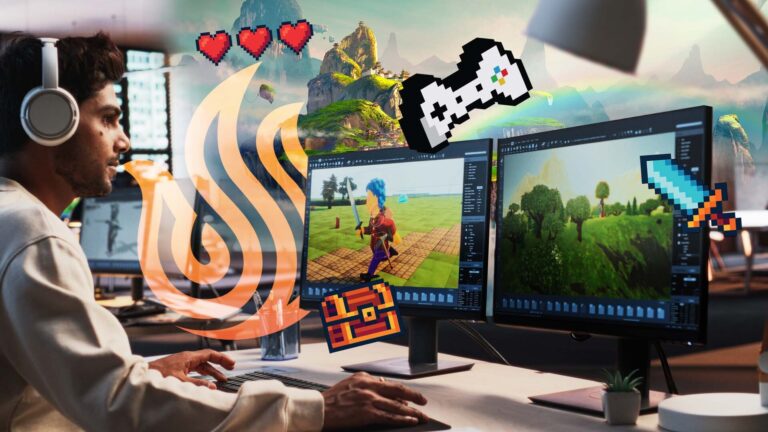Are you interested in becoming a 3D animator but not sure what training you need? If a career in animation is interesting to you, then a great first step is to explore the available options for education and training. Luckily, there are lots of resources available for aspiring animators and digital entertainment students in this modern age of information technology. So, what does a 3D animator train for?
What Does a 3D Animator Train For?
Since 3D animation projects often develop over the course of several years, there are many responsibilities that you will have to adapt to. The main variable that determines what you will work on is timing. If you join early in development, you may have planning and creation assignments. Joining during the later stages of production will see you animating objects and adding visual polish to each scene.
Design Assets
Before adding motion to each scene, the objects and characters for that scenario must be created. Animators have a say in the production of the assets they will be manipulating. You may design characters, right down to body shape and articles of clothing. As for objects, items such as weapons, fans, or doorways all need to be designed to the specifications of the digital world.
Pre-Production Planning/Storyboarding
Joining early in development will allow you to help plan out the work that will come later. While not all of your ideas will make the final product, you will be able to help draw the story boards that establish each scene. Story boarding involves plotting out the events of an animation similar to a comic strip. Each panel clearly shows what will happen at each point of the adventure. When drawing these scenes, the goal is to make your intentions as clear as possible. Everyone on the project should know exactly what each scene needs just by glancing at each respective story board panel.
Animate Objects
Of course, the bulk of your time focuses on animating objects and characters. Depending on the tone of the project, you may make each movement realistic or exaggerated. Grounded stories require realistic animations, and fantastic adventures allow for more creative liberties when designing each motion. In both cases, you will follow the core principles of animation to achieve a professional final result.
Rig Characters
Animating living characters is a bit more complicated than standard objects. The best way to create believable motion is to simulate the bone and muscular structure of the characters. This simulated anatomy is referred to as a character rig. In the case of common archetypes like humans or dogs, an accurate representation is a must. Since the audience has seen other humans and dogs move, their brains will instantly recognize when the movement of these beings is off. When it comes to fantasy or alien creatures, the animator has more leeway when rigging each character.
Add Visual Details or Lighting Effects
Even if you are primarily an animator, you will often add extra details to the assets and scenes you are working with. You may add textures to an object or add light sources to a scene. The fewer people on any given project, the more tasks will be assigned to each team member. Be prepared to fill in any blanks where more detail is needed.
What Training Do You Need to be a 3D Animator?
3D animators require creative passion and a wealth of technical knowledge to be successful. While the passion is intrinsic to each individual, the knowledge must be earned through training. The important thing to focus on is the quality of that training. It is extremely tempting to watch a few animation tutorials on YouTube when first starting out. However, there is a much better way to train for a successful career in 3D animation.
The ideal way to train as an animator is to attend a formal education program. Creative arts colleges offer aspiring animators the best chance of achieving their dream jobs. Not only do you get the best training possible including insider info about upcoming trends, but there are many additional benefits that further help your career prospects.
What are the Benefits of a Formal Education?
A talented artist could land a job within the entertainment industry with just their skills alone. However, the chances of talent alone making you a success is very slim. You will want every advantage possible when performing your job searches. The more benefits you have on your side, the greater your chances of getting hired in the first place. Here are some of the advantages you will gain by attending a creative arts college.
Complete Curriculum
When attending a creative college, your classes will walk you through every step of the animation pipeline. Learning about pre-production, production, and post-production stages of development will allow you to fill any role at a professional studio. Even if you do not enjoy a particular aspect of design, having the confidence to perform any task will make your animation projects easier.
No Gaps in Knowledge
When browsing various tutorials online, you will likely jump around to different topics quite often. There is no structure to the content you are viewing. The lack of organization and structure makes you prone to missing important details that are critical to your education. When enrolled in creative arts college, the classes are laid out in ways that are highly conducive to learning. Your instructors and administrators organize the lessons in a way that is easier to understand. As long as you follow along attentively, you will not miss what is important.
Make Mistakes and Learn From Them
When working on professional animation projects, millions of dollars are invested. Any mistakes or missteps can be extremely costly. Mainstream productions rarely take risks to avoid such hefty mistakes. Luckily, there are no financial strings attached to your college projects. You can try out your wackiest ideas and fumble a few times along the way without fear of major repercussions. Your instructors will not expect perfection the same way investors do. Take all the opportunities you can to try new things in a low stress environment.
Industry Experienced Instructors
One of the best parts of a formal education in animation is the credentials of each instructor. To teach at these schools, the instructors need industry experience. This means that their names will be in the credits of published works. Talking to and learning from industry insiders is a priceless opportunity. You can clear up any misunderstandings you have about the entertainment world and learn things you never would have thought of otherwise. Putting in effort to learn from your instructors will greatly increase your chances of a successful career.
Small Class Sizes
Since talking to your instructors is so valuable, you will want ample chances to do so. Creative arts colleges keep the classes sizes small for this very reason. A teacher can focus more intently on each student when there are only a few dozen pupils per classroom. When your work is evaluated, you can rest assured knowing the instructor was not rushing through an overwhelming stack of assignments. These thorough evaluations will help you develop your skills and consistently improve throughout the curriculum.
Networking Opportunities
Your formal education will place you right next to many other aspiring artists hoping to break into the 3D animation sector. Befriending your classmates and other students on campus will help your career immensely. While your talent and knowledge matters greatly when looking for jobs, a key deciding factor is who you know. Each person you know within the industry represents possible job leads later in your career. Being the first one recommended for a new position is often all you need to get hired for it. Be sure to spread your network as wide as possible throughout your time in college.
Industry Standard Hardware and Software
Professional animations are made with the finest hardware and software available. While these tools are technically available to the public, the prohibitive cost of a professional setup makes it difficult to create one in a home setting. The easiest way to gain familiarity with these tools is to use them during your formal education. You will be provided the best software, powerful hardware, and plenty of time to explore both. Knowing how everything operates will make your first few days at a new studio much easier. Your employer will not expect you to know everything about the programs used at the studio, though a basic level of proficiency goes a long way towards impressing your teammates.
Automatically Build a Portfolio
In the world of entertainment, artists get hired by proving their talent through a collection of previous works. That collection is known as your portfolio. Think of a portfolio as your resume. It lists all the reasons why a potential employer should choose you over the other applicants. The good thing about your college assignments is they can be used to create your portfolio. As long as you put your best foot forward in each class, you will have a solid collection of previous works for your portfolio. In many cases, the school will even show you the ideal way to set up your own portfolio website so that potential employers will be impressed.
Career Services
Even after graduation, your benefits do not end. Career services will assist you in landing your first industry job. A representative from career services will ask you about your skills and interests. From there, you are matched with job openings that are relevant to your current talents. Utilize your college’s preestablished network of entertainment contacts to ensure your application and portfolio are looked at by the studios in the industry.
Want to Learn More?
If your passion is for visual effects, 2D or 3D animation, or concept art for video games or blockbuster films, this is the Digital Arts & Animation degree program for you. Gain the digital arts and animation skills you need to kick off your career in this dynamic and growing industry.
University of Silicon Valley is uniquely poised to offer a meaningful and valuable education for 21st century students. We believe in an education that directly correlates with the work you’ll be doing after you graduate. Interested in learning more? Contact Us today.


